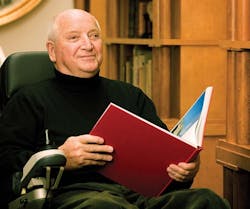Remembering Michael Graves
We’ve set aside our Product Breakdown for the month to honor design icon Michael Graves, who passed away on March 12 at the age of 80. From teakettles to national monuments, the astronomical volume of Graves’ work has touched the lives of millions and served to solidify architecture and design’s place in the American psyche.
At New Jersey’s Grounds for Sculpture, a 50 year retrospective of Graves’ work—aptly titled “Past as Prologue”—will come to a close on April 12, marking the symbolic start of a new future for so many designers, students, colleagues, and friends for whom Graves has set the stage.
Despite the great loss, it seems fitting that this lands in our “Joy of Design” issue. Graves’ unique voice expressed a steadfast devotion to whimsy and wonder, and his passion for design was unceasing. For that, we can never forget him. Here’s how it all breaks down:
350+
buildings designed since founding MGA&D in 1964. Notable projects include the Portland Building, a paragon of post-modern design that was added to the National Register of Historic Places in 2011 (above); the Denver Public Library (below); and the Humana Building in Louisville.
2,500+
products designed for clients such as Target, Alessi, Stryker, and Disney.
14
honorary doctorates from schools including Emory, University of Miami, Rutgers, Drexel, Pratt, and NYSID.
1981
The Memphis Group postmodern design collective debuted at Salone del Mobile. Here, Graves found a platform to break away from the slick rules of the 1970s, embracing ornamental kitsch to question the hierarchies of form and function, and high- and low-class design.
9093
The name of the iconic stove-top kettle designed for Alessi in 1985. It remains one of the company’s top 10 best selling products to this day.
2000
For the Washington Monument's first restoration in 65 years, Graves designed an illuminated scaffolding system that would mimic the stone block pattern of the structure, rather than obscure it (above).
2003
A spinal chord infection left Graves paralyzed from the waist down. ‘’Everyone around here asks me if I’m going to design a wheelchair, but what about this stupid room?’’ he said in a June 2003 interview with The New York Times, while still recovering at the Kessler Rehabilitation Center. Two years later Graves returned to work with a new fervor for healthcare design. He started by asking his design team to spend a week in a wheelchair.
2013
President Barack Obama appointed Graves to the Architectural and Transportation Barriers Compliance Board, where he worked to improve accessibility for people with disabilities.
